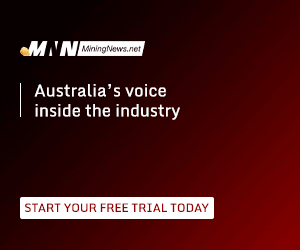Despite being forced to pay $700 million, or 95c per share, more than it wanted to, Rio’s $3.5 billion takeover of North stands to be remembered as one of the great strategic plays in the iron ore mining game of this decade and probably the next.
Forget the $60 odd million that Rio will pick up in earnings per annum, this cash flow is a “pony” of beer alongside the strategic “jugs” of a) knocking out an emerging competitor b) putting a boot on the world’s next iron ore mega mine – West Angelas - and c) having the production clout to out-muscle the Brazilians at annual price talks with Japanese steel mills.
Twelve months ago Rio wasn’t too fussed about North and its Robe River mines in the Pilbara region of Western Australia.
Apart from doing its level best to quash any idea of a shared railway vial legal and political filibustering, Hamersley Iron (Rio’s iron ore subsidiary) was always keen pooh-pooh West Angelas, pointing to its “new age” mines such as Yandicoogina (an operation whose production is being expanded to 20 million tones per annum), which could be brought on quickly, relatively cheaply and with the need for limited manpower.
While the headlines were trumpeting West Angelas’ projected outputs through its various ramp-up stages, HI quietly boasted that its Homestead project area could ultimately host as many as four satellite mines which could flood the market with ore long before West Angelas even put a foot in the water.
But London thinks differently to those here in Oz.
Rio’s chairman Sir Robert Wilson made it quite clear last week where he sees the future. Give a big tick to iron ore and another one to alumina, which could be where the multinational’s next acquisition could be made. Rio’s investment in Comalco alone contributed 23% of group net earnings in the first half of 2000 of US$677 million. These sectors coupled with its giant copper division now make up the heart of Rio’s business mix.
It’s interesting to look at Rio’s half-year performance. For the six months to June 30, Rio lifted group sales earnings by 7% to US$4.57 billion. Its net earnings were up 33% from $509 million to $677 million.
A great effort, however, the company was dealt some aces. Asian steel demand is in recovery, making HI more profitable. Alumina production was up which accounts for the strong performance of Comalco. And across the board, a lift in commodity prices contributed an extra $181 million to earnings.
It could be argued that when you have the sort of revenue streams and asset base that Rio has that anything is possible. But Rio didn’t get to this position of resilience and opportunity by being short sighted. More than three years ago, chief executive Leon Davis and his henchmen made some tough calls. Tired or doubtful assets were disposed of and costs were pared to the bone.
It’s this last point that has former North employees trembling in their Red Wings at the moment. While North was considered pretty “fat free” it has a long way to go to reach the HI model, which in many ways has become mining’s IR and personnel benchmark in Australia.
HI’s changes haven’t come without pain – the hardest hit was the company’s middle management. And although some may describe some of its management strategies as naff – like HI’s Perth staff wearing their mine garb to work to stay in “sync” with those on site – the record shows that in the past three years, HI has dramatically cut its overheads and radically improved efficiency. If you want envy, just talk to BHP.
Just how well the “synergies” (a nice way of saying reducing costs) between Rio’s and North’s mining assets come together will be fascinating to watch in coming months. Already guaranteed is that non-core assets such as the forestry assets will be given the chop.
To that end, don’t be surprised to see a few people from North’s iron ore division floating around as well.

























